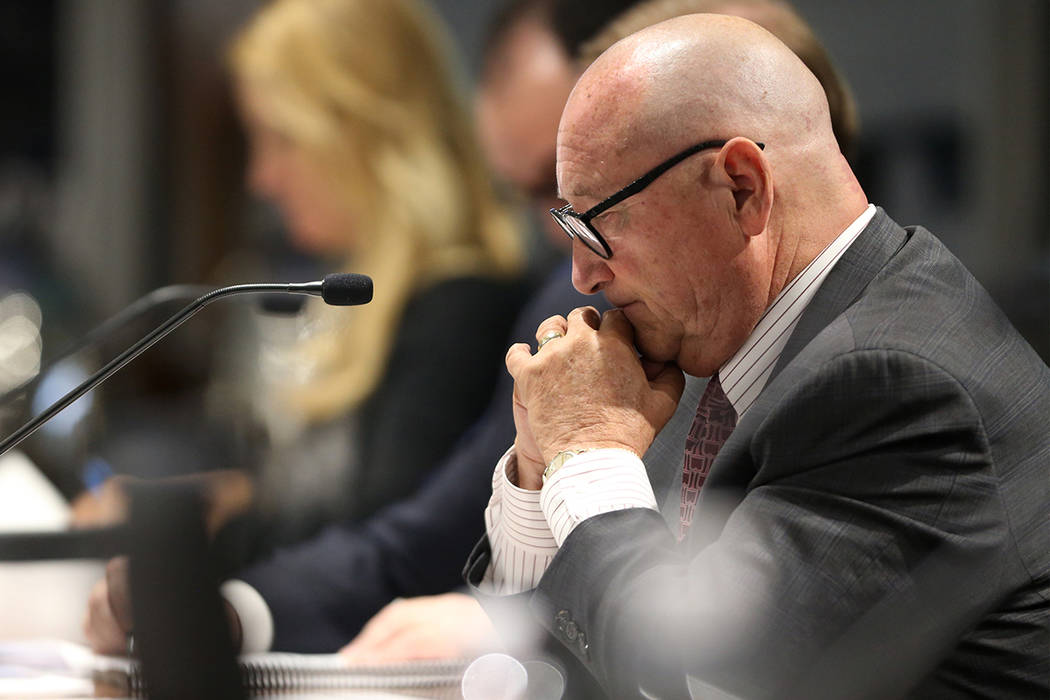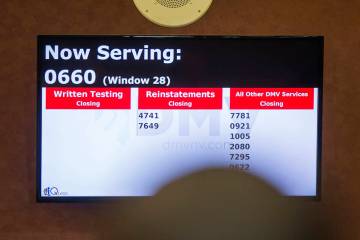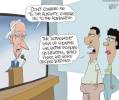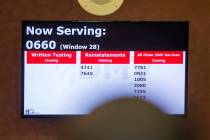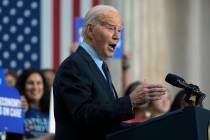EDITORIAL: Over 2,000 PERS retirees collecting pensions over $100K
Over 2,150 people raked in at least $100,000 apiece last year from the Public Employees’ Retirement System of Nevada. That’s according to pension data now available at Transparent Nevada.
That number has been growing rapidly. In 2013, just over 1,000 people collected pensions worth at least $100,000. The number of retirees collecting over $200,000 a year has grown too. In 2013, 10 people received pensions greater than that amount. Last year, 23 people did.
The highest earner was retired University of Nevada Reno football coach Chris Ault, collecting $293,000. That’s up from $272,000 in 2013. Former Las Vegas Convention and Visitors Authority CEO Rossi Ralenkotter left his position in disgrace, but it didn’t hurt his pension. He took in $233,000. That actually understates his yearly pension, because he retired in August. Based on this monthly payment amount, he’ll collect $284,000 next year, likely vaulting him into the second highest payout. The most recent data is from Fiscal Year 2019, which ran from July 2018 to June 2019.
Comparing these payouts with past data shows how generous — read, expensive for taxpayers — PERS is. Consider Donald O’Shaughnessy, who retired as a fire battalion chief in 2010 with almost 35 years of experience. In 2009, his last full year of service, he collected $224,000 in pay and another $82,000 in benefits. In 2013, the earliest year pension data is available on Transparent Nevada, O’Shaughnessy collected $234,000 from PERS. In 2019, his pension had grown to $271,000. That’s a nearly $37,000 increase in six years — after retirement. Most of the taxpayers paying for that increase didn’t receive anywhere near as much. The median household income in Nevada was $55,000 in 2017, according to the Census Bureau.
It’s not just the top earners receiving benefit increases. Mark Dabney retired from Las Vegas Metro in 2011. The year before, he earned $140,000 in pay and $60,000 in benefits. In 2013, his pension was $109,000. That’s especially generous considering that he had just 25 years of service. If he started with Metro in his early 20s, like many police officers do, he would have been younger than 50 when he retired. In 2019, his pension had grown to $121,000.
Multiple examples like this by 63,000 retirees, and it’s obvious why PERS has grown more and more expensive. In 2015, the legislature reduced the maximum cost of living adjustment to 3 percent a year, but that change only applies to those hired after the law was changed. Some current retirees can receive COLAs of up to 5 percent a year.
The public needs to see data like this, because public dollars guarantee these pensions. Retirees like to claim that they’re just receiving their own money back, plus investment earnings. That’s how the system is supposed to work, but it hasn’t been. Contribution rates for current employers and employees continue to increase to pay off past pension debt. That means previous workers didn’t contribute enough to pay for the benefits they’re receiving now.
Since 2009, the contribution rate for regular employees has increased from 20.5 percent to 29.25 percent. That’s a 42 percent increase, even though the promised benefits for new employees have decreased. Employers and employees split those costs. The rising contribution rates have both strained government budgets and decreased pay for government employees. It’s a lose-lose, brought on by rising pension costs. Rising PERS expenses exacerbate things like the recent tension between the Clark County School District and teachers union.
Lawmakers and the public need every bit of information they can get about PERS to try and craft a solution to this problem. Unfortunately, Gov. Steve Sisolak and Democrat legislators passed a bill last session restricting how much information the public has. Going forward, PERS can only release names and payout amounts. The bill made secret data like years of service, retirement date and last employer. This information would be helpful in determining if PERS payouts are overly generous. That’s likely why they decided to hide the information.
But even the limited data is revealing. Nevada can’t afford the high PERS payouts paid to retirees. Next session, lawmakers need to fundamentally reform Nevada’s retirement system.



